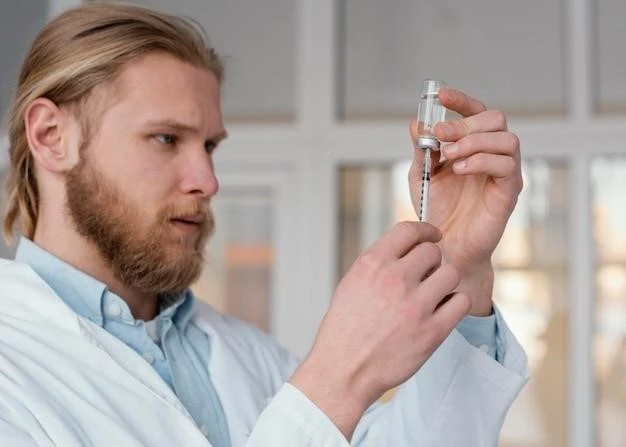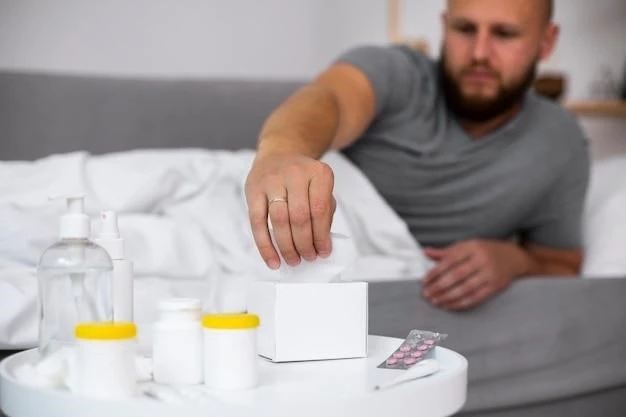Povidone-Iodine⁚ Overview and Uses
Learn about the uses of povidone-iodine‚ from wound care to surgical antiseptic applications. Understand its benefits and precautions.
Introduction to Povidone-Iodine
Povidone-iodine is a widely used antiseptic solution known for its broad-spectrum antimicrobial properties. It is commonly used in medical settings for its effectiveness in killing bacteria‚ viruses‚ and fungi. This solution is composed of iodine and the polymer polyvinylpyrrolidone‚ which allows the gradual release of iodine for prolonged antimicrobial activity.
Before using povidone-iodine‚ it is essential to check for any allergies to iodine products. Consult a healthcare professional for guidance on its appropriate use‚ especially if you have sensitive skin or existing skin conditions. Understanding the proper application techniques and potential side effects of povidone-iodine is crucial for maximizing its benefits and minimizing risks.
Common Uses of Povidone-Iodine
Povidone-iodine is commonly used for wound care‚ such as cuts‚ burns‚ and abrasions‚ due to its antiseptic properties that help prevent infection. It is also utilized as a surgical antiseptic to ensure a sterile environment during medical procedures. In addition‚ povidone-iodine is effective in treating skin infections like impetigo and dermatitis‚ demonstrating its versatility in various medical applications.
When using povidone-iodine‚ always follow the recommended guidelines and consult healthcare professionals for specific conditions. Its broad-spectrum antimicrobial action makes it a valuable tool in maintaining hygienic practices and promoting healing. Understanding the appropriate uses of povidone-iodine enhances its efficacy in diverse healthcare settings.
Povidone-Iodine for Wound Care
Discover the effectiveness of povidone-iodine in wound healing. Follow proper application techniques for optimal results.
Effectiveness in Wound Healing
Povidone-iodine’s antiseptic properties aid in preventing infections in wounds‚ promoting faster healing. It helps reduce the risk of bacterial contamination‚ ensuring a clean environment for healing. Properly applying povidone-iodine to wounds can enhance the healing process by keeping the area free from harmful microorganisms. Consult healthcare providers for guidance on using povidone-iodine effectively for wound care. Understanding its role in wound healing can contribute to better outcomes and improved recovery;
Proper Application Techniques
When applying povidone-iodine for wound care‚ ensure the wound is clean before application. Gently spread the solution over the affected area‚ covering it with a sterile dressing if necessary. Follow healthcare provider recommendations on application frequency and duration. Avoid using excessive amounts of povidone-iodine and consult professionals if you experience any adverse reactions. Understanding the proper application techniques is crucial for maximizing the benefits of povidone-iodine in wound healing. Seek guidance on the correct use of this antiseptic to promote effective and safe wound care practices.
Povidone-Iodine as a Surgical Antiseptic
Understand the role of povidone-iodine in maintaining sterility during surgical procedures. Follow best practices for effective surgical antisepsis.
Role in Surgical Settings
Povidone-iodine plays a critical role as a surgical antiseptic by reducing microorganisms on the skin to minimize the risk of surgical site infections. Healthcare professionals often use it to prepare the skin before incisions‚ helping create a sterile field for procedures. Understanding the importance of povidone-iodine in surgical settings enhances patient safety and aids in preventing post-operative complications. Consult with your healthcare provider for guidance on the proper application of povidone-iodine in surgical antisepsis to maintain aseptic conditions during medical interventions.
Best Practices for Surgical Antisepsis
When using povidone-iodine as a surgical antiseptic‚ adhere to best practices to ensure optimal effectiveness. Thoroughly cleanse the skin with the solution‚ covering the surgical site generously. Allow sufficient contact time as recommended for maximum antimicrobial action. Avoid contaminating the sterile field during application and maintain stringent aseptic techniques. Follow established protocols for skin preparation before surgeries to minimize the risk of infections. Consulting with surgical team members and healthcare providers can help you implement best practices for surgical antisepsis using povidone-iodine‚ contributing to successful outcomes and reduced complications.

Povidone-Iodine in Skin Infections
Learn how povidone-iodine can effectively treat various skin infections. Understand the precautions for safe application.
Treating Skin Infections with Povidone-Iodine
When treating skin infections with povidone-iodine‚ ensure the affected area is clean before application to maximize effectiveness. Apply the solution gently to the infected area‚ covering it with a dressing if needed. Follow healthcare provider recommendations on frequency of application and duration. Be cautious of any skin reactions and consult professionals if necessary. Understanding the proper use of povidone-iodine for skin infections is crucial for promoting healing and preventing further complications. Seek guidance on the correct application techniques to ensure safe and effective treatment of skin infections.
Precautions for Skin Application
When applying povidone-iodine to the skin‚ perform a patch test if you have sensitive skin or a history of reactions to iodine products. Avoid contact with eyes‚ ears‚ and mucous membranes. Pregnant or breastfeeding individuals should consult healthcare providers before use. In case of allergic reactions like rash or irritation‚ discontinue use and seek medical advice. Adhere to recommended application techniques and avoid prolonged use on large areas of the skin. Understanding these precautions is essential for safe and effective utilization of povidone-iodine for skin applications.
Povidone-Iodine⁚ Side Effects and Precautions
Understand the potential side effects and precautions when using povidone-iodine. Prioritize safety and follow recommended guidelines.
Potential Side Effects
Common side effects of povidone-iodine may include skin irritation‚ redness‚ or allergic reactions. In rare cases‚ it can lead to severe skin issues or thyroid problems due to iodine absorption. Promptly seek medical attention if you experience adverse effects. Avoid using povidone-iodine if you have iodine allergies or thyroid conditions. Pregnant or nursing individuals should consult healthcare providers before using. Understanding the potential side effects is crucial for safe application and minimizing risks associated with povidone-iodine usage. Prioritize your health and well-being by being aware of these considerations.
Precautionary Measures
Take precautionary measures when using povidone-iodine by conducting allergy tests‚ avoiding contact with sensitive areas‚ and seeking medical advice if needed. Consider the risks of iodine absorption and adhere to recommended guidelines for safe application. Pregnant or nursing individuals‚ along with those with existing medical conditions‚ should consult healthcare professionals before using. Follow proper dilution and application instructions to prevent adverse reactions. Understanding the precautionary measures associated with povidone-iodine is essential for ensuring its safe and effective utilization in various healthcare scenarios. Prioritize your well-being by taking appropriate precautions during its application.
Povidone-Iodine in Pharmacology and Medicine
Explore the pharmacological properties and medical applications of povidone-iodine. Understand its diverse roles in healthcare settings.
Overview of Pharmacological Properties
Povidone-iodine exhibits potent antibacterial‚ antiviral‚ and antifungal properties‚ making it effective in combating a wide range of pathogens. Its ability to destroy microorganisms by disrupting their cell membranes contributes to its widespread use as an antiseptic. In addition‚ povidone-iodine has anti-inflammatory effects‚ aiding in wound healing processes. Understanding the pharmacological properties of povidone-iodine is crucial for utilizing it effectively in medical applications. Consult healthcare professionals for guidance on its specific pharmacokinetics and pharmacodynamics to maximize its therapeutic benefits and ensure safe administration.
Medical Applications
Povidone-iodine is widely used in medical practice for various applications such as wound care‚ surgical site preparation‚ and skin infection treatment. Its broad-spectrum antimicrobial activity makes it a valuable tool for preventing infections in healthcare settings. Healthcare professionals often utilize povidone-iodine to disinfect skin before surgical procedures‚ reducing the risk of post-operative complications. Additionally‚ its efficacy in managing skin infections like impetigo highlights its versatility in dermatological care. Understanding the diverse medical applications of povidone-iodine empowers healthcare providers and individuals to leverage its benefits for improved patient outcomes and infection control.
